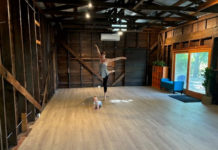There are many victims of the coronavirus pandemic of 2020 — locally, across our nation and globally as well. Just in Sonoma County, there are several kinds of victims, and not all are humans. First, we have had 20 COVID-19 fatalities and over 2,000 positive infections. Thousands of local workers have become unemployed or have lost their jobs. Our Latinx population has suffered by extra measure. Individual businesses and our general economy are being victimized by the enforced closure under public health safety rules. But maybe the most perilous victims are our school children, after only the disease’s deaths.
We are promised a vaccine by maybe next year that will counter the health threats of the coronavirus and allow us to bring back nearly all parts of our social and economic activities, our “normal life.” But this anticipated scientific breakthrough is not expected to avert what could become a full year’s loss of schooling, social advancement and youthful pleasures for our county’s 68,000 K-12 students. Some of these students also will likely become individual COVID-19 disease victims as well. All of these students already have been victims of the devastating Tubbs and Kincade wildfires of 2017 and 2019.
The prospect of a lost year of school, replete with untried teaching modes, uneven internet access, lack of childcare and ever-changing sets of school administration plans is looking inescapable.
Over the past four months of the COVID-19 shutdown, we have gone from living to merely existing. Most of us are coping as best we can, but the unending cloud of uncertainty is wilting our ambitions, prohibiting social gatherings, thwarting opportunities and framing every day with a layer of fear. For us older folks who’ve seen a few things, we tell ourselves we can manage. But our children are more vulnerable and less prepared for so many unknowns. They need comforting answers from their parents and teachers that do not exist.
Most California schools will start a new year in August with distance learning programs and closed campuses because the COVID-19 virus curve is unflattening. Hopes are that local schools will be allowed to open later in the year if the virus spread gets tamed. But no matter what the virus allows, the school year of 2020-21 will earn a failing grade. The “best case” scenarios we’ve seen so far outline a school day where everyone wears face coverings, requires six feet of physical separation at all times, must include frequent stoppages for sterilization and will cost extra money that local schools do not have at this time.
There won’t be any team athletics, social time or gym assemblies and the three R’s of academics might become the three P’s — protect, prevent and persevere.
We think students and their teachers should work together and create their own Lemonade Academies. All lesson plans would be based on variations of “when life gives you lemons (something unwanted), make lemonade (something positive.)”
The first lesson would be about why we must wear masks. This life-saving lesson would be about personal safety and social responsibility. The second lesson plan should teach the science of viruses, disease spread, biology, healthy habits and why more pandemics are already being predicted and what we can do about it.
Since everyone will be spending extra time at home, we should have a set of lesson plans about home economics. Parts of this lesson could include many do-it-yourself activities like gardening, cooking and house maintenance. All age groups, including parents, could participate. The ultimate lemons and lemonade lesson could be about civics and communication. How can we convert disruptive, ill-informed social media (lemons) into egalitarian networks for spreading messages of fairness and expanded opportunities for all (lemonade)?
The final test at the end of the school year would be how many COVID-19 memories we convert into lemonade memories.
— Rollie Atkinson








